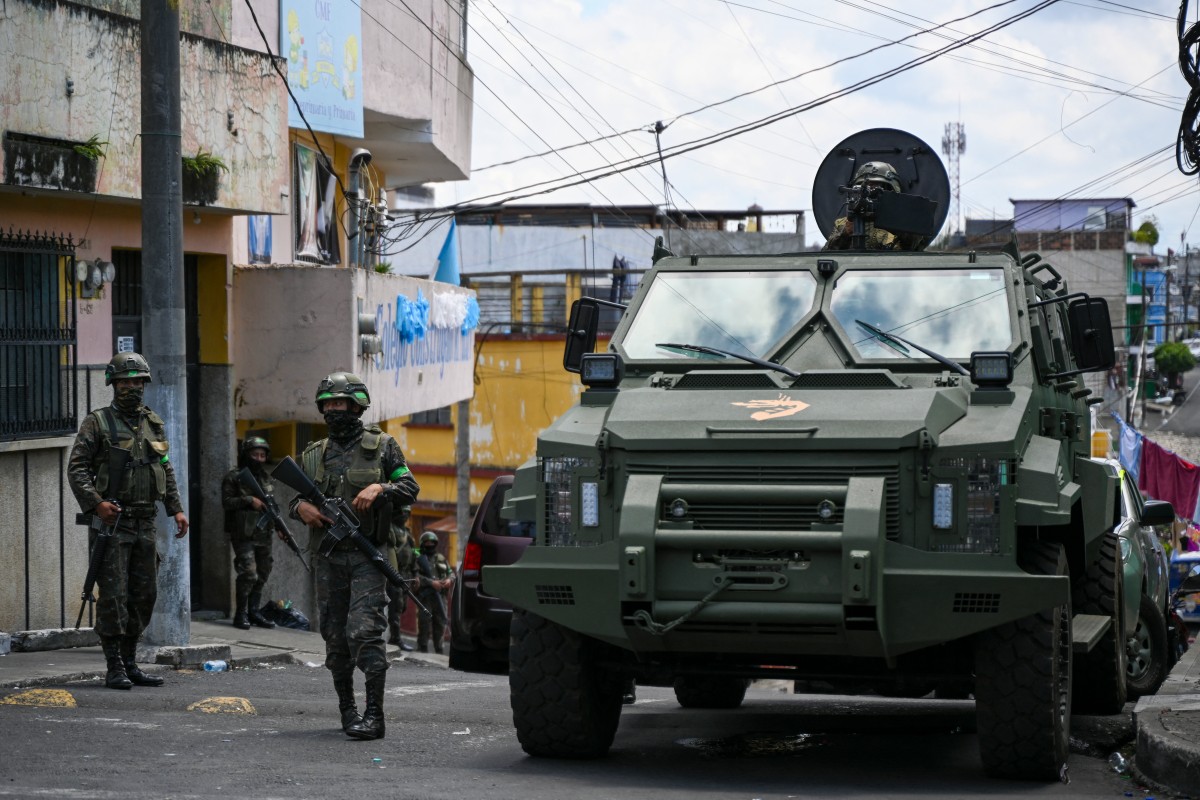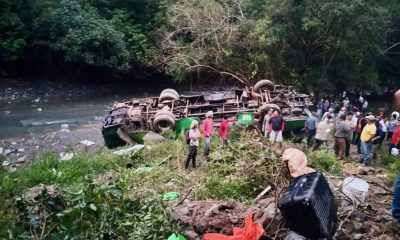Central America
Costa Rica, six years generating renewable energy

As 2020 draws to a close, Costa Rica will mark its sixth consecutive year, producing renewable energy in almost all of its system. Especially through water and geothermal energy, reported the government.
The Energy Control Center (CENCE), pointed out that by the end of 2020 “the National Electric System (SEN) will have generated over 98% of its electricity from renewable sources.”
As of December 15, preliminary data shows that In 2020, 99.78% of the energy has been generated from clean sources. “Energy from (fossil) fuels has been the lowest since 1986,” added the CENCE. In addition, in 2020, water used in hydropower plants continued to be the primary source within the electrical matrix, with 71.95%.
The institution added that in Costa Rica, the second most important source of energy is geothermal, contributing 14.90%. Then the wind 12.39%. While biomass and the sun contributed 0.54%.
Central America
Honduras: Zelaya Calls for Mobilization Amid Dispute Over Tegucigalpa Mayoral Race

Manuel Zelaya, general coordinator of Honduras’ ruling Liberty and Refoundation Party (Libre, left-wing), on Saturday called on party supporters to mobilize next Monday in support of Tegucigalpa Mayor Jorge Aldana, who claims he is being defrauded in his bid for re-election.
“If the people do not mobilize because it is Christmas, then Libre party militants, out of conscience, must mobilize this Monday at 4:00 p.m. (22:00 GMT) at the INFOP (National Institute for Professional Training) to support Aldana in a peaceful, non-violent and democratic resistance against what they are already applying as the ‘Trump Algorithm 2025 – Honduras-style elections,’” Zelaya wrote on social media platform X.
Aldana, who considers himself the winner of the capital’s mayoral race following the general elections held on November 30, has been camping for 19 days outside the INFOP facilities, where all election materials are stored under military and police protection. The National Electoral Council (CNE) has already declared Nasry Asfura, of the conservative National Party, president-elect.
According to Aldana, who is seeking re-election under the Libre banner, the tally sheets in his possession confirm his victory. However, National Party mayoral candidate Juan Diego Zelaya is reportedly leading by a margin of around 600 votes.
While acknowledging that the margin is extremely narrow, Aldana is demanding a full review of more than 400 tally sheets, which he believes will ultimately confirm his win.
On Friday, Aldana told EFE that the protest camp was established “to raise a voice of protest, grounded in truth.” He added, “I am a journalist, and journalism teaches us to report truthfully, to live by the truth and to die for the truth. Here I am with the tally sheets in hand and the 492 inconsistencies identified by the CNE.”
Although uncertainty surrounding the presidential election results has subsided after Asfura—who is backed by U.S. President Donald Trump—was declared president-elect, tensions persist in municipal and legislative races due to inconsistencies in tally sheets across several of Honduras’ 18 departments.
The situation remains highly complex, as the special vote count has been paralyzed for three consecutive days. The process, which began on December 18 with a five-day delay, involves 2,792 tally sheets with reported inconsistencies.
According to CNE council members Ana Paola Hall (president) and Cossette López, representatives of the Liberal and National parties respectively, the paralysis is the result of a political party “boycott” at the Electoral Logistics Center (CLE).
The full CNE board, which also includes Marlon Ochoa of the Libre Party, held meetings on Friday and again on Saturday, virtually, to address delays in the special count of municipal and legislative election results.
Central America
International leaders congratulate Honduras’ president-elect Asfura

The United States government was among the first to congratulate the president-elect, through Secretary of State Marco Rubio.
China’s Foreign Ministry spokesperson Lin Jian said at a press briefing that Beijing “is willing to work with Honduras to jointly promote the continued development of bilateral relations.”
The European Union also expressed its commitment and interest in working with Asfura to advance “shared priorities aimed at deepening bilateral ties.”
In addition, the foreign ministries of Spain, the United Kingdom, and Uruguay issued messages congratulating the president-elect.
Presidents from Panama and Paraguay, as well as the government of Chile, also extended their congratulations to Asfura. Furthermore, the governments of Argentina, Bolivia, Costa Rica, Ecuador, Panama, Paraguay, Peru, and the Dominican Republic released a joint statement saying: “We reaffirm our solidarity with the Honduran people and express our hope that the transition will take place in a peaceful and orderly manner.”
Central America
Guatemala arrests 92 salvadoran gang members in 2025

Between January 1 and December 25, 2025, a total of 92 Salvadoran gang members were arrested in Guatemala, according to a report released by that country’s National Civil Police (PNC).
The arrests were carried out as part of border control operations and efforts to combat transnational crime, aimed at preventing members of terrorist criminal structures from entering or remaining in Guatemala after fleeing El Salvador’s state of emergency, which has been in force since March 27, 2022.
The Guatemalan PNC reported that 46 of those detained were expelled and handed over to Salvadoran authorities at the four land border crossings between the two countries.
According to official information, Guatemala’s Interpol National Central Office (NCB) and the Salvadoran National Civil Police maintain close coordination and information-sharing mechanisms to verify the criminal records of gang members.
The 46 individuals expelled to El Salvador were wanted on charges including illicit association, extortion, homicide, drug trafficking, illegal restriction of freedom of movement, and other forms of organized and complex crime.
Guatemalan police transferred the suspects to their Salvadoran counterparts, who then referred them to the courts seeking their arrest. The most recent detainee was Melvin Antonio Mejía Rivas, alias “Porky,” a member of the 18th Street gang, who was apprehended in Zone 16 of Guatemala City. He has been wanted for illicit association since November 4, 2019.
Another arrest involved Judith Cristina Cáceres de Rivera, originally from Ahuachapán, who was detained in Zone 3 of San José Pinula on extortion charges. Authorities said she demanded 7,000 quetzales per week from a local व्याप merchant.
Guatemalan police also reported that 46 Salvadorans have been arrested in the country for committing various criminal offenses.
-

 International4 days ago
International4 days agoAt Least Eight Dead and 19 Injured in Deadly Bus Crash in Veracruz, Mexico
-

 Central America1 day ago
Central America1 day agoHonduras: Zelaya Calls for Mobilization Amid Dispute Over Tegucigalpa Mayoral Race
-

 Central America3 days ago
Central America3 days agoGuatemala arrests 92 salvadoran gang members in 2025
-

 International4 days ago
International4 days agoJair Bolsonaro Hospitalized for Inguinal Hernia Surgery While Serving Sentence for Attempted Coup
-

 Central America3 days ago
Central America3 days agoInternational leaders congratulate Honduras’ president-elect Asfura
-

 International17 hours ago
International17 hours agoWinter storm disrupts holiday travel, forcing 1,500 flight cancellations in the U.S.




























